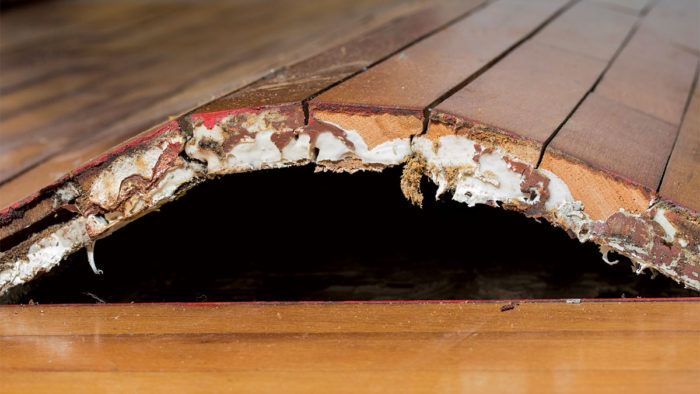Plan for Wood Movement in Construction Projects
Learn to anticipate and accommodate shrinking, swelling, twisting, and buckling when working with this ubiquitous building material.

Synopsis: Wood has been used as a building material for thousands of years, and it continues to be used widely for everything from framing to floors to trim. But if you build with wood without a knowledge of how it expands and contracts with changes in relative humidity, you’re going to pay a price: cracks in drywall, gaps in floors, open miters, doors that stick. Fortunately, contributing editor Asa Christiana is an expert guide. In this article, he explains the forces of nature that contribute to wood movement and gives tips for managing moisture changes and seasonal changes.
 Despite advances in technology, wood remains an unmatched building material. It’s strength-to-weight ratio is higher than steel’s, yet wood is less expensive in much of the world.
Despite advances in technology, wood remains an unmatched building material. It’s strength-to-weight ratio is higher than steel’s, yet wood is less expensive in much of the world.
From solid softwoods and hardwoods to “engineered” products such as plywood, MDF, OSB, LVL, and much more, wood is used widely in the building trades. It can be cut and shaped with basic tools, and joined quickly and powerfully with nails and screws, among other things. Better yet, wood is a renewable resource. However, as every experienced contractor knows, these organic products perform very differently from more inert materials like steel, concrete, drywall, and tile. In fact, engineered-wood products perform differently from solid wood, and solid wood is far from consistent. “Green” wood performs differently from dried lumber, and even after kiln drying, movement due to relative humidity is still a factor. Different wood species have very different rates of seasonal expansion and contraction.
Ignore these realities, and serious problems will develop—mostly after construction when the fixes range from frustrating to expensive to impossible.
 When 2x joists shrink at different rates than engineered beams, floors get springy and sloped, drywall cracks, windows and doors stick, reveals become uneven, and crooked gaps appear around the room. Use wet framing lumber, and trapped moisture turns into mold, nails and screws pop, and grout lines crack. Rush through construction without letting moisture dissipate and lumber acclimate, and all sorts of problems arise, from scribed joints opening up to entire floors buckling. Even normal seasonal wood movement will cause problems if you don’t plan for it, such as door panels shrinking to reveal a strip of unpainted wood. The list goes on.
When 2x joists shrink at different rates than engineered beams, floors get springy and sloped, drywall cracks, windows and doors stick, reveals become uneven, and crooked gaps appear around the room. Use wet framing lumber, and trapped moisture turns into mold, nails and screws pop, and grout lines crack. Rush through construction without letting moisture dissipate and lumber acclimate, and all sorts of problems arise, from scribed joints opening up to entire floors buckling. Even normal seasonal wood movement will cause problems if you don’t plan for it, such as door panels shrinking to reveal a strip of unpainted wood. The list goes on.
If you know a little of the science behind wood movement, there’s almost always a solution. And when there isn’t a solution, your job becomes appreciating, or helping your clients to appreciate, wood’s organic nature and what to expect.
From Fine Homebuilding #280
To view the entire article, please click the View PDF button below.
More about the properties of wood:
- How it Works: Simple Wood Beams
- Drying Wet Framing Lumber
- Quartersawn Wood and Rift-Sawn Wood, Explained
Fine Homebuilding Recommended Products
Fine Homebuilding receives a commission for items purchased through links on this site, including Amazon Associates and other affiliate advertising programs.

Graphic Guide to Frame Construction

A Field Guide to American Houses

Get Your House Right: Architectural Elements to Use & Avoid



















